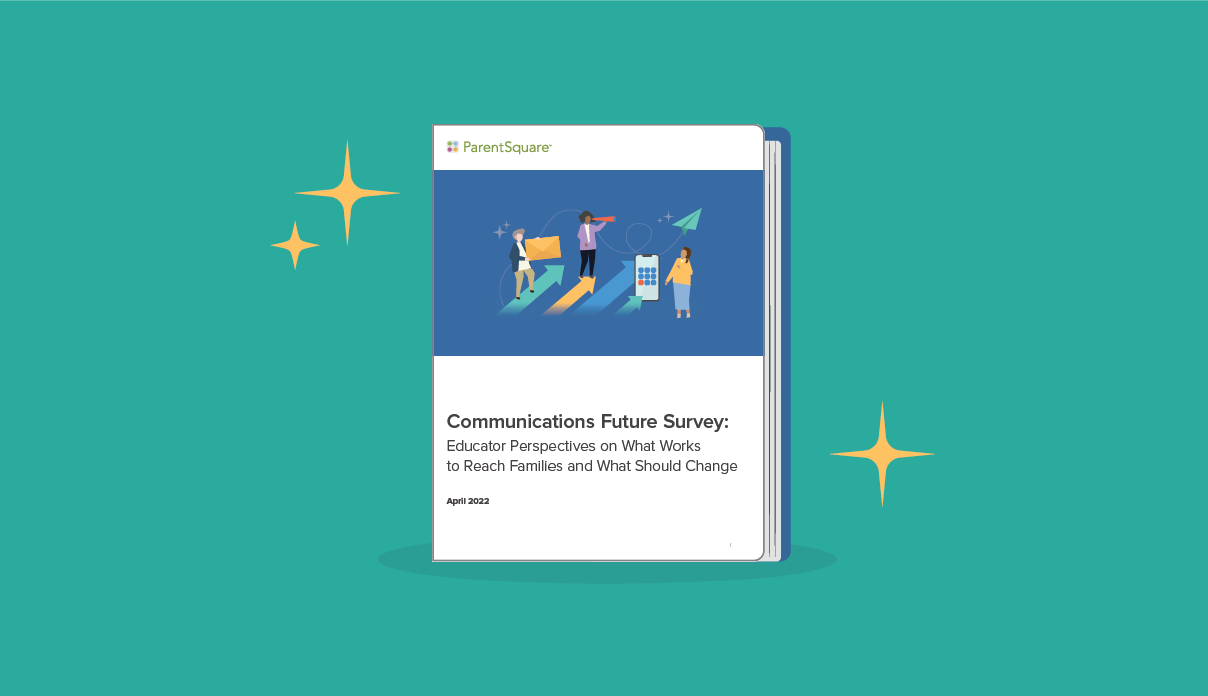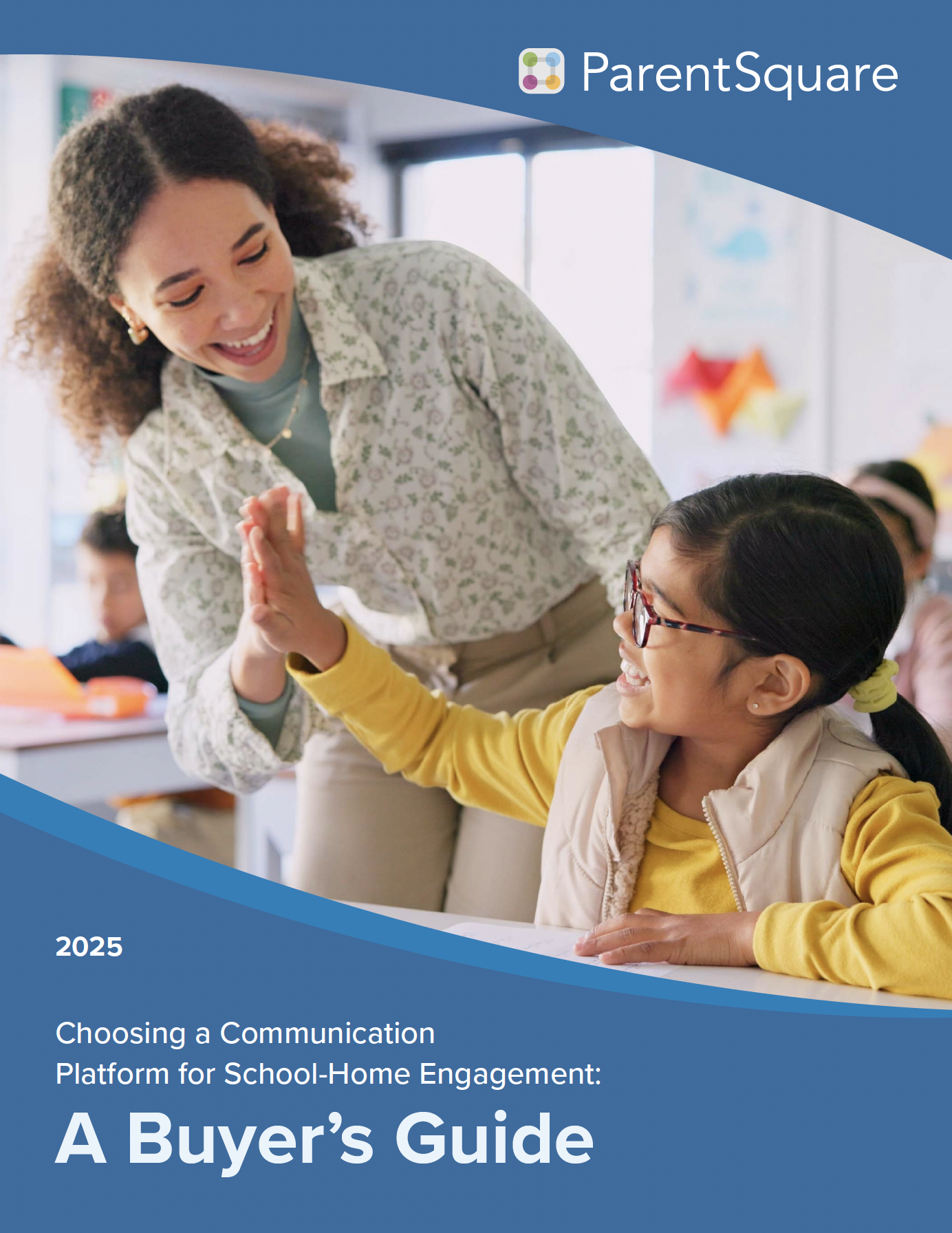In conjunction with our new national survey about the future of school-home communication, we hosted a recent panel discussion with school communications leaders. The survey, conducted in early 2022, had over 1,300 respondents from both customers and non-customers of ParentSquare, with most respondents being school administrators.

From this survey, we found several key takeaways about how schools are communicating with families:
- Most schools use multiple channels of communication, which illustrates the importance of sending communications through multiple channels to reach all families.
- Email is used most frequently and is seen as the most effective method of communication, but text and voice communications are both seen as twice as effective as they are frequent.
- In the next two to three years, respondents project the most likely communications methods to increase in use are the mobile app, SMS text, and social media.
- Many districts hope to eliminate their use of paper flyers over the next two to three years, with 64% of respondents saying their district wants to go paperless.
- Over the next several years, schools hope to significantly increase their use of mobile apps and texting to communicate with families.
- More than 75% of schools are using a communications application or platform, and more than half are using a student information system (SIS) or email for school-home communications.
To further dive into the significance of these survey results, we had a discussion with Keith Krueger, Elisabeth O’Bryon, Ph.D., and Trinette Marquis, APR about what these takeaways mean for the future of school-home communication. They shared their thoughts about the results of our survey and how these results fit into the greater picture of school-home communications.



Survey Results That Stood Out
Trinette said that these results align with what CalSPRA is seeing in their research across districts, which is that parents are feeling overwhelmed with the large amount of information they receive. She noted that to better process this information, parents want to receive it in a digital format that is easily accessible and that they can go back and look up at their own convenience.
Keith noted the similarities between the results of the ParentSquare survey and a recent CoSN survey, which highlighted the changes in communications over the last two years because of the pandemic. In the CoSN survey, they found that the biggest changes in communications over the past two years have been the frequency of communication and the number of channels schools utilize to communicate.
Elisabeth mentioned her curiosity to further explore the connection between frequency of communications and effectiveness of those methods. Whether it’s caused by availability or ease of use, she noted that this data is representative of what she sees in her work with Family Engagement Lab, which is that families all consume information in a unique way and it’s important to consider the diversity of needs and experiences when communicating with families.
Reaching Diverse School Communities
Trinette said that it’s important for each district to understand their own audience because channels of communication should be driven by what their community’s preferences are. She also noted districts must be careful to make sure that they’re reaching everyone, especially the underrepresented voices.
Keith proposed the question: How are schools acquiring family preferences, and do they maintain and track that information to improve communications? Rather than put out information across many channels and hope that at least one of them makes it to families, Keith noted that it could be useful for districts to ask and record what specific methods of communication parents prefer and cater communications to those preferences.
Elisabeth pointed out that families really are eager for information about what their kids are learning and how they can help their students succeed. With all of that back and forth between teachers and families, she noted that some of that information could get lost, so the goal should really be to find how we can help the information that’s most relevant become the most salient for families.
The Biggest Takeaway
“We’ve been talking about how the future is going to offer a mix of options to reach as many families as possible. Seeking out input from the community is central to learning and implementing those different options.”
—Elisabeth O’Bryon, Ph.D.
Co-founder and Chief Impact Officer, Family Engagement Lab
She also noted that going forward, the school community should be the main factor driving district decision-making, based on the unique needs of all stakeholders within your community.
Keith’s main takeaway from the conversation is that districts constantly have to be looking at the best way––right now––to get the most information to parents and thinking through how that process works the best for your community.
For Trinette, it all comes back to accessibility. She highlighted the importance of understanding your community and where they go for information, then meeting them where they’re at and constantly removing any barriers to communication.
“I think the most important thing is that––no matter what channel you’re using––you’re using multiple channels and having some kind of central place that someone can look back to.”
—Trinette Marquis, APR
Executive Director, California School Public Relations Association (CalSPRA)
This conversation opened a valuable dialogue on the future of school-home communications and finding ways to reach diverse school communities with different channels of communication. To view the conversation in its entirety, check out the webinar recording here.







